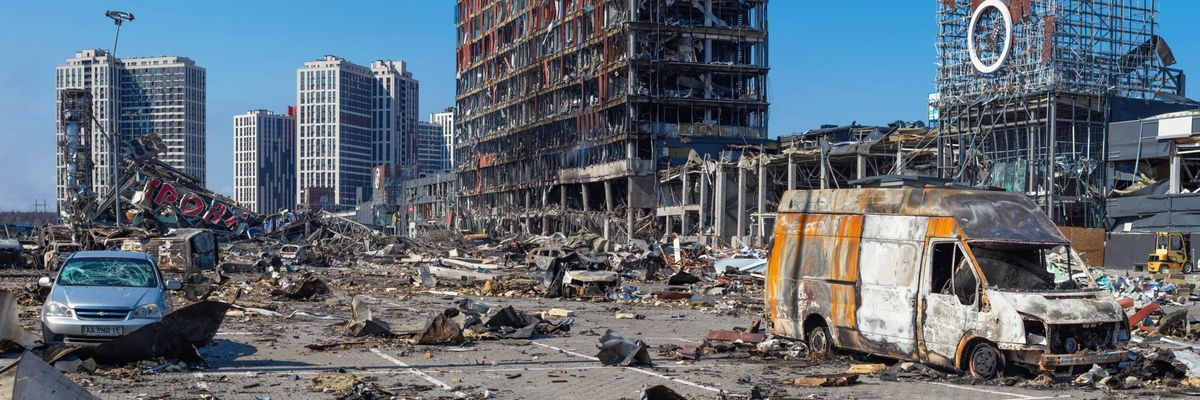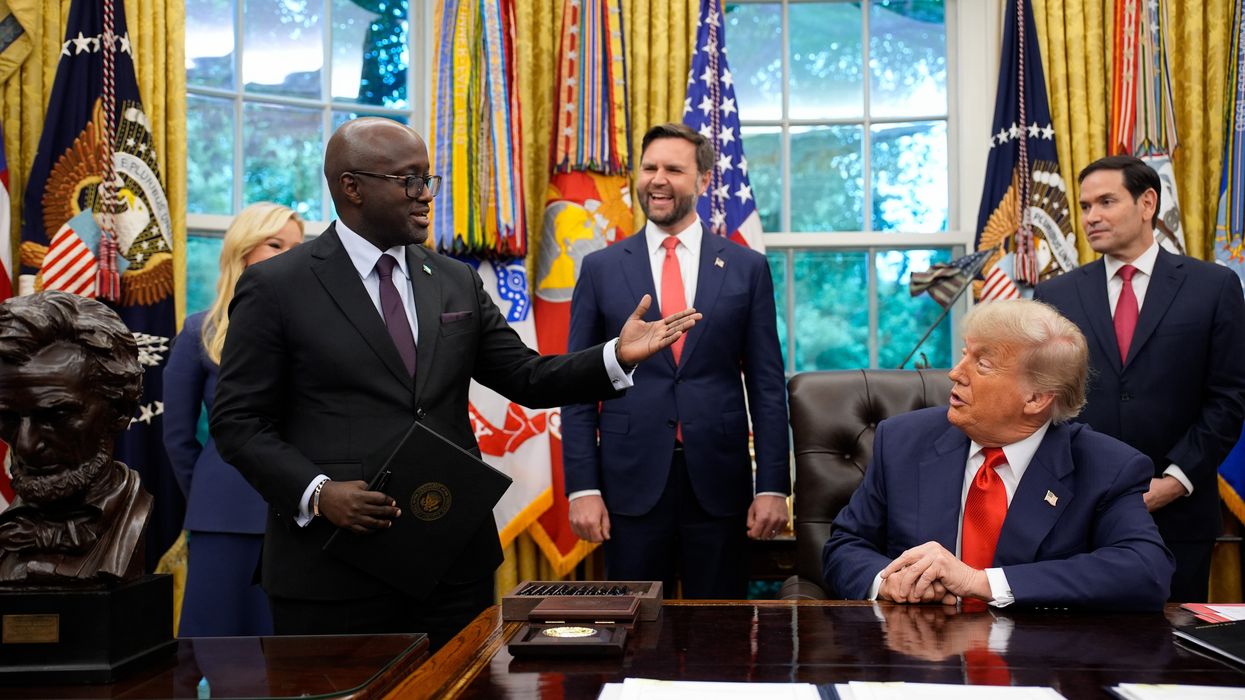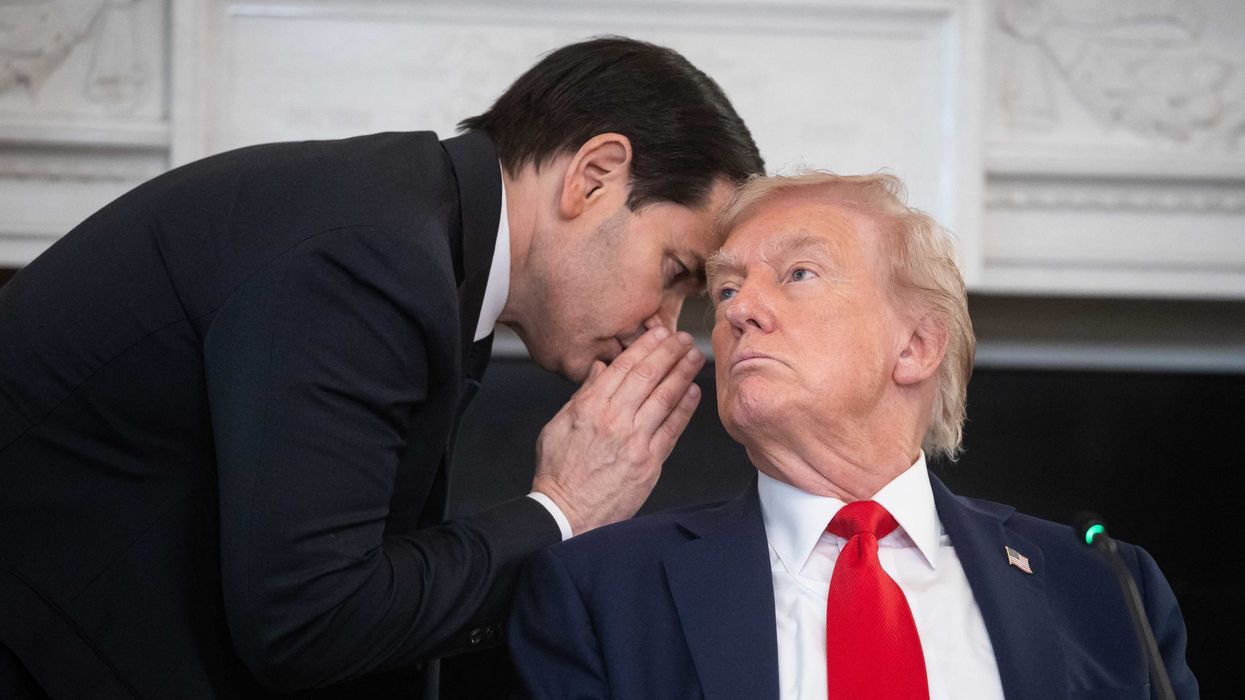Two months after Ukrainians impressively repelled Russia’s attack on Kyiv, the war is taking a different course.
Russian troops are consolidating their gains in Donbas as up to 1,000 Ukrainian fighters are killed or wounded daily. This puts the war on track to be among the bloodiest in modern history. Despite the delivery of heavy weaponry from the West, Ukraine is outmatched by Russian artillery — for each shell or rocket fired by Ukraine, Russia fires about ten. The war has been difficult to predict, but time is not on Ukraine’s side.
So the time for aggressive diplomacy in Ukraine is now, and the recent G7 and NATO summits, and the G20 foreign ministers meetings last week, were colossal missed opportunities to restart the peace process. Rather than strategizing about how to extract the best terms from a Russia that appears ready to negotiate, leaders of the most powerful democracies have worked to “starve” Russia of oil money and further “weaken” the Russian military, and even resorted to schoolyard taunts to Putin. This during a moment when we most need the adults in the room to help de-escalate the conflict.
There is still time — and leverage — to achieve a diplomatic settlement, after all. The United States could make clear that, while it supports Ukraine’s fight, it has different stakes. Washington has a definite interest in curbing Russian aggression in Europe but it’s not as invested in restoring Ukraine’s pre-invasion borders as, well — Ukraine is. Kyiv has nothing to lose (and potentially a lot to gain) if the war escalates into a wider confrontation between NATO and Russia. But NATO countries, including the United States, would have a lot to lose — especially if this escalation turns nuclear.
None of us wants to live in a world where “might makes right” and where Ukraine feels compelled to make concessions after Russia’s illegal invasion. But all of us do live in a world where national leaders face real and intensifying domestic political pressure to rapidly end this war.
Gas prices have surged globally and in the United States, President Biden is seeming to recognize that Americans may rather have lower gas prices with “Putin’s iron fist in Europe.” as he pushes for a suspension of the federal gas tax. In Germany, leaders have declared a “gas crisis” and may look to rationing as Russia cuts exports to western Europe. This problem will only become more pronounced as winter approaches.
A new poll by my organization, the Eurasia Group Foundation, suggests the U.S. response to the war in Ukraine has broad international support but that this is primarily because it has avoided a direct confrontation with Russia. Asked about the most important U.S. goals, avoiding a U.S.-Russia war and preventing Ukrainians’ suffering were the two most frequently chosen answers. (The two least frequent were: defending democratic countries from the threat of autocratic ones and weakening Russia.) A diplomatic settlement would better ensure the success of these two internationally popular goals.
A push for diplomacy is consistent with President Biden’s commitment to curb escalation. He repeatedly commits to limiting U.S. intervention against Russia’s invasion. He privately called on Secretary of State Antony Blinken and Secretary of Defense Lloyd Austin to tone down their talk of weakening Russia by proxy. If war between Ukraine and Russia were an indispensable part of a global contest between democracy and autocracy, the United States would not limit the types of weapons it sends nor abstain from putting its troops in harm's way.
So far, Washington has succeeded primarily by avoiding unachievable war aims. U.S. shipments of weapons helped thwart the intended encirclement of Kyiv. The United States rallied wealthy European countries to take more responsibility for the continent’s security and to join international sanctions on Moscow. Without firing a shot, Washington has helped Ukraine maintain most of its territorial integrity and all of its political autonomy.
In comparison, the stated war aims of Vladimir Putin have abjectly failed. He was not able to install a pro-Russian government in Kyiv. Far from stopping NATO enlargement, his invasion prompted long-neutral Sweden and Finland to make a bid to join the alliance. Finally, the Russian military has revealed itself to be exquisitely capable of operational blunders and tactical failures. As one former NATO leader told me, Russia has been exposed as “a medieval pillaging army rather than a sophisticated modern force, more of a mere missile launching army than a deep-strike army.”
This is hardly a success for Putin. Although he has weathered economic sanctions, enjoyed soaring approval ratings, and might even end up peeling off a Russophilic and Russophonic piece of Ukraine, any diplomatic end to this war will see Putin with a reduced military strength, a weakened economy, and diminished geopolitical influence.
There is little to suggest Ukraine might get better terms through a long proxy war. Analysts are skeptical of Ukraine’s ability to reconquer territory — a problem more weapons shipments won’t solve. Short of an all-out intervention by the United States or European powers, it’s far-fetched to think the West will compel Russia to surrender, or put Putin on trial before the International Criminal Court (however cathartic such an idea is).
So, what’s to be done? The United States needs to open a diplomatic channel with Moscow to get a clearer sense of what would be an acceptable settlement for all parties. Right before the invasion, Deputy Secretary of State Wendy Sherman indicated “possible support” for an approach in which Ukraine would pledge military neutrality and give up its bid for NATO membership. If it will stop the suffering of ordinary Ukrainians, why should the United States not encourage Ukraine to put that back on the table now? Given its ongoing struggles with corruption and undemocratic practices, Ukraine is still far from meeting the democratic criteria of NATO membership anyway.
Promises of unlimited support only embolden what is starting to be seen as the Ukrainian president’s “reckless stubbornness” in outright rejecting the possibility of territorial concessions. President Biden has repeatedly expressed that there are limits to U.S. assistance — it does not help Ukraine to pretend otherwise. It is rare that a war ends in total defeat, and it is not realistic to expect Moscow will fully retreat. U.S. policy must now shift to embrace this reality, and plan for the months ahead when deep divisions within the Western coalition grow, and when, in a lopsided war of attrition, Ukraine might lose even more ground.
















